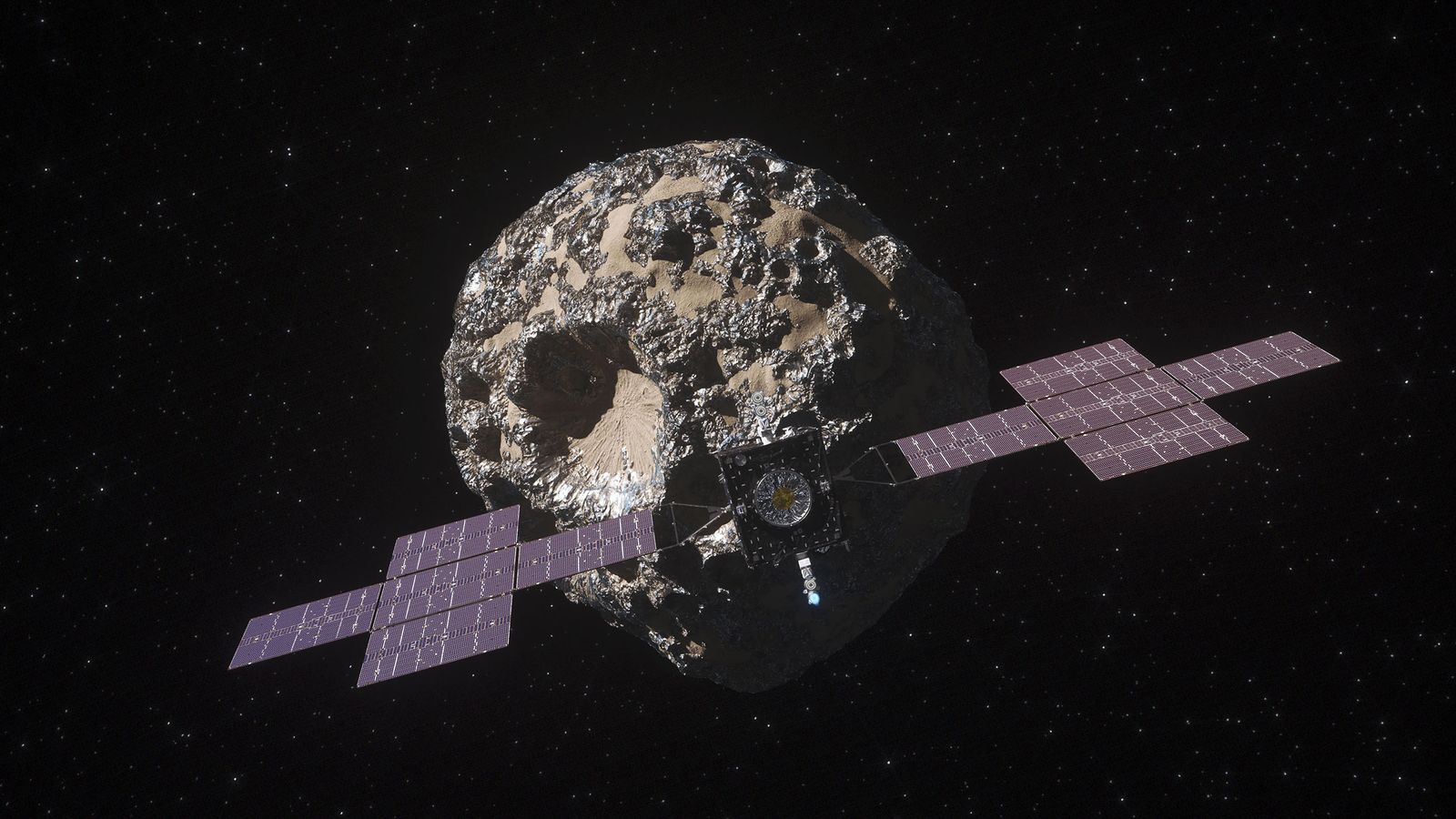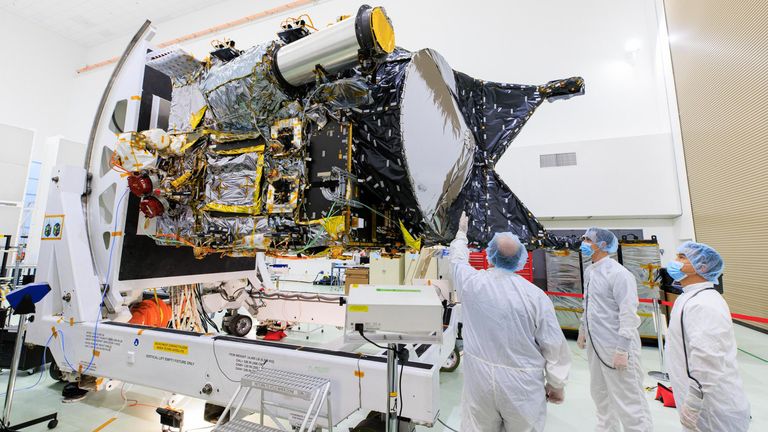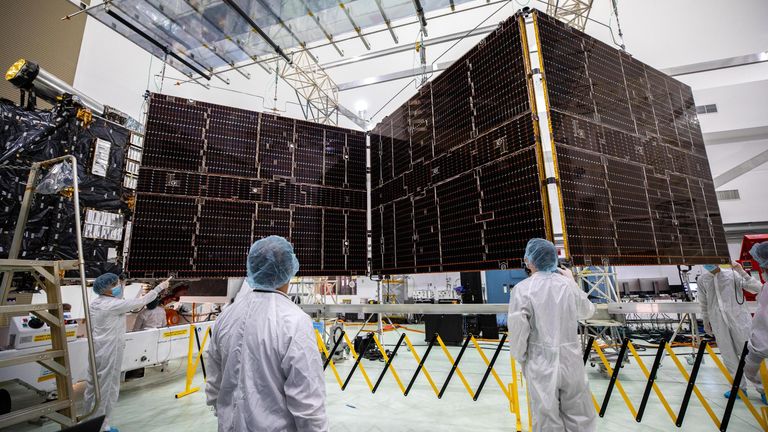NASA and SpaceX are set to send a spacecraft to a giant metal asteroid discovered back in the 1800s.
The goal? To reveal more about the origins of our solar system.
Here’s everything you need to know about the mission.
What is Psyche?
Psyche is the name of the mission, as well as the name of NASA’s spacecraft and the name of the asteroid that it will head to.
The asteroid Psyche is a unique, metal-rich asteroid orbiting the sun between Mars and Jupiter.
It is three times farther from the Sun than Earth – and the distance from Earth to Psyche varies from about 186 million miles to more than 372 million miles.
If all goes as planned, asteroid Psyche’s gravity will capture the spacecraft in late July 2029.
The Psyche spacecraft is then expected to spend at least two years orbiting the asteroid – which has a mass of about 440 billion billion pounds – while taking the first-ever images of it.
The purpose of the mission
Unlike most other asteroids that are rocky or icy bodies, scientists think asteroid Psyche is compromised mostly of metallic iron and nickel, similar to Earth’s core.
It appears to be the exposed core of an early planet, one of the building blocks of our solar system.
NASA, therefore, hopes to make discoveries about Earth and other rocky planets and how they were formed by looking at Psyche.
The space agency says the asteroid “may offer a close look at the interior of terrestrial planets like Earth”.
It adds: “We can’t bore a path to Earth’s metal core – or the cores of the other rocky planets – so visiting Psyche could provide a one-of-a-kind window into the violent history of collisions and accumulation of matter that created planets like our own.
“If the mission is successful, it will be the first time we’ve been able to explore a planet formation consisting of iron cores.”
NASA says the mission is the exploration of “a new type of world”.
The asteroid
The big picture is to learn more about our planet and our universe – but NASA scientists are also curious about the Psyche asteroid itself.
We know it is one of the largest asteroids in our solar system, spanning about 173 miles at its widest point.
The giant metal rock was discovered in 1852 by Italian astronomer Annibale de Gasparis. Because it was the 16th asteroid to be discovered, it is sometimes referred to as 16 Psyche.
NASA said scientists are considering the possibility that Psyche could be an exposed core of an early planet as large as Mars, which shed its rocky outer layers due to violent collisions billions of years ago.
But they are not entirely sure what Psyche is.
It has been viewed through telescopes for nearly two centuries now, yet we don’t even know exactly what it looks like.
It has, however, been described as “irregular and potato-like” by NASA.
They also want to know the age of Psyche’s surface, as well as its mineral composition and topography.
Scientists have spoken of their excitement about seeing Psyche up close for the first time to learn more about its origin – and one of the most exciting aspects of the mission is “the possibility of the unexpected”.
The spacecraft
The Psyche spacecraft’s main body is about the size of a small van, but with its solar panels, it would just about cover a tennis court.
It is powered by solar electric propulsion and if all goes to plan, the spacecraft will start sending images to Earth in August 2029.
It will use a super-efficient propulsion system called Deep Space Optical Communications (DSOC).
Using a near-infrared laser, DSOC will be the agency’s first test of high-bandwidth optical communications between Earth and distances far exceeding the moon.
It means NASA is going from radio communications to laser communications in space, with the space agency comparing it to upgrading old telecommunications infrastructure on Earth with fibreoptics.
This form of communication could potentially provide essential bandwidth enhancement without requiring hardware increases. It should increase data rates 10 to 100 times.
If it proves successful, NASA says the technology will be used by future human and robotic spacecraft to transmit huge volumes of science data, possibly paving the way for NASA to send astronauts to Mars.
When is the launch – and how can I see it?
The launch takes place on Friday 12 October at approximately 3.16pm UK time.
The mission will go into orbit on a SpaceX Falcon Heavy rocket from NASA’s Kennedy Space Centre in Florida.



